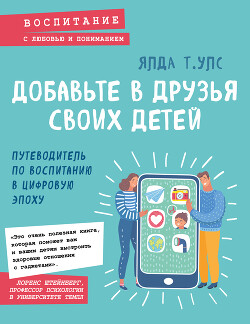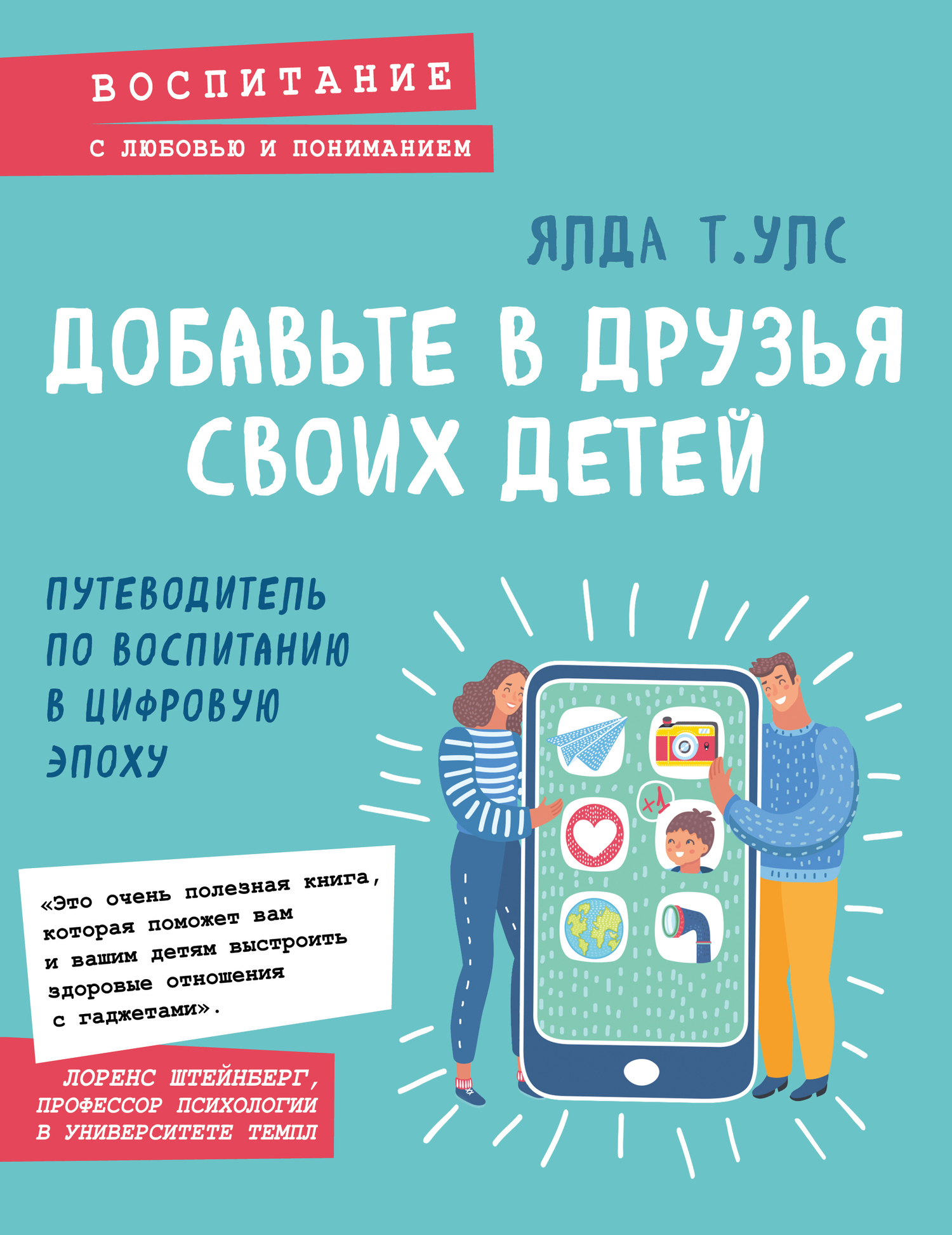28. J. Magill-Evans, K. Manyk, and A. Cameron-Sadava, “Child and Adolescent Social Perception Measure: Manual” (Unpublished manuscript, 1995).
29. J. Radesky et al., “Patterns of Mobile Device Use by Caregivers and Children During Meals in a Fast Food Restaurants,” Pediatrics, (2014).
30. J. Radesky et al., “Maternal Mobile Device Use During a Structured Parent-Child Interaction Task,” Academic Pediatrics, (2014).
31. C. Palsson, “That Smarts! Smartphones and Child Injuries” (Department of Economics, Yale, 2014).
32. Highlights magazine, The State of the Kid 2014, Highlights for Children, 2014, https://cdn.highlights.com/hfc/highlights/state-of-the-kid/Highlights -SOTK14.pdf?_ga=1.157347514.1483083552.1403891518.
33. Michele Borba, “Parents Too Plugged In? That’s What Our Kids Say,” Pediatric Safety, 2012, http://www.pediatricsafety.net/index.php?s=She%E2%80% 99s%20always%20on%20her%20blackberry.%20It%E2%80%99s%20 soooo%20annoying.
34. Growing Wireless, “Kids Wireless Use Quick Facts,” 2015, http://www .growingwireless.com/get-the-facts/quick-facts.
35. L. Sakari et al., “Adolescents’ Electronic Media Use at Night, Sleep Disturbance, and Depressive Symptoms in the Smartphone Age,” Journal of Youth and Adolescence 44 (2014).
36. R.S. Weisskirch, “Parenting by Cell Phone: Parental Monitoring of Adolescents and Family Relations,” Journal of Youth Adolescence 38 (2009).
37. “Intrusive Monitoring of Internet Use by Parents Actually Leads Adolescents to Increase Their Risky Online Behavior,” Science Daily, January 21, 2015, http://www.sciencedaily.com/releases/2015/01/150121093507.htm.
38. M. Dworak and A. Wiater, “Media, Sleep and Memory in Children and Adolescents,” Sleep Disorders & Therapy 2 (2013).
39. National Sleep Foundation, 2014 Sleep in America Poll: Sleep in the Modern Family, Summary of Findings, 2014.
40. Drowsy Driving.org, “Facts and Stats,” National Sleep Foundation, 2015.
41. National Sleep Foundation, 2014 Sleep in America Poll.
42. M. Hysing et al., “Sleep and Use of Electronic Devices in Adolescence: Results from a Large Population Based Study,” BMJ Open 5 (2015).
43. Dworak and Wiater, “Media, Sleep and Memory in Children and Adolescents.”
44. Sakari et al., “Adolescents’ Electronic Media Use at Night, Sleep Disturbance, and Depressive Symptoms in the Smartphone Age.”
45. National Sleep Foundation, 2014 Sleep in America Poll.
Глава 4
1. G.S. Small et al., “Your Brain on Google: Patterns of Cerebral Activation During Internet Searching,” The American Journal of Geriatric Psychiatry 17 (2009): 116-26.
2. K.L. Mills, “Effects of Internet Use on the Adolescent Brain: Despite Popular Claims, Experimental Evidence Remains Scarce,” Trends in Cognitive Sciences 18 (August 2014).
3. J.N. Giedd, “The Digital Revolution and Adolescent Brain Evolution,” Journal of Adolescent Health 51 (2012): 101-5.
4. J.Q. Anderson and L. Rainie, Millennials Will Benefit and Suffer due to Their Hyperconnected Lives, Pew Internet and American Life Project (Pew Research Center, 2012).
5. Mills, “Effects of Internet Use on the Adolescent Brain.”
6. F. Tong and M.S. Pratte, “Decoding the Patterns of Human Brain Activity,” Annual Review of Psychology 63 (2012).
7. L. Cattaneo and G. Rizzolatti, “The Mirror Neuron System,” Neurological Review 66 (2009).
8. M. Iacoboni, “Imitation, Empathy and Mirror Neurons,” Annual Review of Psychology, 2009.
9. M.D. Lieberman, Social: Why Our Brains Are Wired to Connect (New York: Broadway Books, 2014).
10. N.I. Eisenberger, M.D. Lieberman, and K.D. Williams, “Does Rejection Hurt? An fMRI Study of Social Exclusion,” Science 302 (2003).
11. Lieberman, Social: Why Our Brains Are Wired to Connect.
12. Small et al., “Your Brain on Google: Patterns of Cerebral Activation During Internet Searching.”
13. S.J. Blakemore, “The Developing Social Brain: Implications for Education,” Neuron 65 (2010): 744-47.
14. J.N. Giedd, “Brain Development During Childhood and Adolescence: A Longitudinal MRI Study,” Nature Neuroscience 2 (1999).
15. M.H. Johnson, “State of the Art: How Babies’ Brains Work,” Psychologist 13 (2000).
16. T.T. Brown and T.L. Jernigan, “Brain Development during the Preschool Years,” Neuropsychology Review 22 (2012).
17. Giedd, “Brain Development During Childhood and Adolescence: A Longitudinal MRI Study.”
18. J.H. Pfeifer and S.J. Blakemore, “Adolescent Social Cognitive and Affective Neuroscience: Past, Present, and Future,” Oxford Journals, (2012).
19. A. Galvan et al., “Earlier Development of the Accumbens Relative to Orbi- tofrontal Cortex Might Underlie Risk-Taking Behavior in Adolescents,” The Journal of Neuroscience 26, no. 5 (2006): 6885-92.
20. E.E. Forbes et al., “Healthy Adolescents’ Neural Response to Reward: Associations with Puberty, Affect, and Depressive Systems,” Journal American Academy Child Adolescent Psychiatry 49 (2010).
21. D.J. Siegel, Brainstorm: The Power and Purpose of the Teenage Brain (Tarcher, 2014).
22. L. Steinberg, “Cognitive and Affective Development in Adolescence,” Trends in Cognitive Sciences 9 (2005).
23. S.J. Blakemore and K.L. Mills, “Is Adolescence a Sensitive Period for Socio- Cultural Processing?,” Annual Review of Psychology 65 (2014).
24. M. Gardner and L. Steinberg, “Risk-Taking Among Adolescents, Young Adults and Adults: The Role of Peer Influence,” Developmental Psychology, (2005).
25. Blakemore and Mills, “Is Adolescence a Sensitive Period for Socio-Cultural Processing?”
26. J.H. Pfeifer and S.J. Blakemore, “Adolescent Social Cognitive and Affective Neuroscience: Past, Present, and Future,” Oxford Journals, (2012).
27. Siegel, Brainstorm: The Power and Purpose of the Teenage Brain.
28. D. Meshi, C. Morawetz, and H.R. Heekeren, “Nucleus Accumbens Response to Gains in Reputation for the Self Relative to Gains for Others Predicts Social Media Use,” Frontiers in Human Neuroscience 7 (2013).
29. D.I. Tamir and J.P. Mitchell, “Disclosing Information About the Self Is Intrinsically Rewarding,” Proceedings of the National Academy of Science 109 (2012).
30. A.D. Gindrat et al., “Use-Dependent Cortical Processing from Finger-Tips in Touchscreen Phone Users,” Current Biology, (2014).
31. Lauren Sherman, Dissertation Launchpad, YouTube video, 2015, https:// www.youtube.com/watch?v=bQ6owMqy-ZI&index=2&list=PLzuXAck 6Rr0OzE6gz_uOicWz1pPrUJoNx.
32. Sookeun Byun et al., “Internet Addiction: Metasynthesis of 1996-2006 Quantitative Research,” Cyberpsychology and Behavior 12, no. 2 (2009): 203-7.
33. A. Jaffe and Y. T. Uhls, “Internet Addiction—Epidemic or Fad?” Psychology Today, 2011, https://www.psychologytoday.com/blog/all-about-addiction/ 201111/internet-addiction-epidemic-or-fad.
34. D. Bavelier, C.S. Green, and M. W.G. Dye, “Children, Wired: For Better and for Worse,” Neuron 67 (2010): 692-701.
35. S.J. Kirsch and J.R. Mounts, “Violent Video Game Play Impacts Facial Emotion Recognition,” Aggressive Behavior33 (2007): 353-58.
36. Giedd, “The Digital Revolution and Adolescent Brain Evolution.”
Глава 5
1. A. Lenhart et al., Teens, Social Media & Technology Overview 2015, Pew Internet and American Life Project (Pew Research Center, 2015).
2. R.F. Baumeister, “The Need to Belong: Desire for Interpersonal Attachments as a Fundamental Human Motivation,” Psychological Bulletin 117 (1995): 497-529.





